Rich deposits of metals, created by the dynamic geologic environment that built the rugged Andes Mountains, became intertwined with Andean cultures. The Incas and their ancestors created exquisite gold and silver metalwork items as prestige objects for the elite members of society and for use in religious rituals. Copper, tin, lead, iron, and mercury were widely used for functional tools and in pigments for decorative uses. Various metals were combined with other metals in alloys that enhanced the desirable characteristics of the materials.
Andean metallurgy utilized the same metals and alloys valued elsewhere in the ancient world, but the artistic focus and many of the objects produced were different. In the Old World (Africa, Europe and Asia), metallurgies emphasized the mechanical properties of metals—strength, hardness and sharpness—for tools and weapons. The ancient Andeans had a special appreciation for brilliance and excelled at producing metal items to highlight that characteristic.
Archaeological evidence of mining and processing of metals provides insights into the importance of metal resources in Andean societies. Numerous indications of ancient mining activity have been found in widespread tunnel and trench excavations, piles of waste rock, and mining tools left behind.
Metals of Antiquity
Since ancient times people around the Earth have used seven principal metals. Known as the “metals of antiquity,” these are gold, silver, copper, tin, lead, iron, and mercury. All these metals can be found in the central Andes. Except for iron, these metals have relatively low melting points and can be easily processed. Most have the favorable properties of being soft and malleable, allowing the material to be hammered into thin sheets and then shaped. Isolated from other cultures, the ancient Andeans developed and shared over millennia the most sophisticated metallurgy technologies to arise in the Americas.
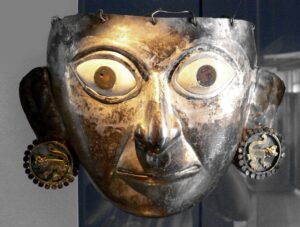 Moche (circa 400-700 CE): Death Mask, Silver with Gold, Turquoise, Pyrite and Shell Inlays
Moche (circa 400-700 CE): Death Mask, Silver with Gold, Turquoise, Pyrite and Shell Inlays
Finding Metals in the Andes
The Andes Mountains are especially rich in metals, with some deposits that are among the richest found on Earth. Metallic ores, those accumulations of metals that are sufficiently large to make metal extraction practical, frequently develop from the high temperatures, pressures and shearing forces that deform rock when tectonic plates collide. And the Andes have a geologic history that includes tens of millions of years of subduction, with tectonic plates of oceanic crust colliding with the South American continental plate.
Not surprisingly, the lines of volcanoes in the Andes Mountains contain high concentrations of gold, copper, silver, lead, tin, and other metal ores. Some ore deposits, such as copper, are disseminated throughout volcanic rocks. Other metal deposits are localized, including gold that accumulates in the quartz veins that develop within granitic rocks. Metallic minerals are often found concentrated along fault zones, or along contacts between different types of rock.
As magma bodies cool deep underground, different elements and minerals crystallize at characteristic distinct temperatures. Dense crystals drift downwards, settling into accumulations at the bottom of the magma pool. When the forces that build mountains uplift rocks that cooled deep underground, the rocks are exposed to the erosive power of wind and water, and minerals are released as the rocks gradually weather and disintegrate. Washed down into streams, heavier elements such as gold accumulate as placer deposits.
The Most Ancient Mines – Old World and New World
Iron oxide is among the most common minerals found on Earth. When iron oxide is ground into a powder and combined with sand and clay, the result is a family of pigments called ochre. The colors of ochre can range from a brownish yellow to orange, red, and even purple. Red ochre, from the iron mineral hematite (anhydrous iron oxide) has been especially valued by ancient people for thousands of years. Numerous ancient cultures worldwide have used red ochre in cave paintings and in human burials, possibly as a symbol of blood and a form of ritual rebirth.
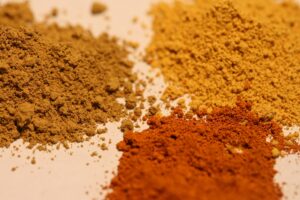 Ochre Pigments
Ochre Pigments
The oldest mine on Earth is reportedly a hematite mine found at Ngwenya Mine in Swaziland in southern Africa. Called Lion Cave, the mine was excavated deep into a hematite cliff by the indigenous San people. Numerous simple stone picks, hammers and other mining tools have been found in the cave, along with the hematite used to make the numerous rock paintings found in the region. Radiocarbon age dating of charcoal in the cave indicates the oldest mining activities go back about 42,000 years, although some experts postulate they could be tens of thousands of years older.
Mining at Lion Cave began long before people arrived in South America. Migrating from Siberia, the first Americans likely reached the Andes Mountains sometime around 15,000 to 20,000 years ago, and possibly earlier. The oldest mine recognized in the New World was excavated roughly 12,000 years ago. Located in northern Chile, the ancient San Ramon 15 mine consists of a deep trench dug down into an iron oxide-rich vein, where the minerals hematite and goethite were collected to produce red and yellow ochre. In addition to the importance for painting and in funerary rituals, ochre was used as a medicine, to preserve food and wood, to cure animal hides, and as an ingredient in adhesives.
Using heavy hammerstones of hard rock to pound and batter the iron vein to extract the pigments, the ancient miners extended the San Ramon 15 mine trench to a depth of greater than 25 feet. How long this took, we will never know, but we do know the tools that they used. Around the mine, archaeologists have found numerous complete and broken, hard and rounded hammerstones. Some of these weigh up to 35 pounds, and are composed of andesite, granite, basalt, quartzite and other locally available rock.
Geologists today use steel hammers to break off fresh, or un-weathered, chunks of rock to identify the mineral components. Early in my geology fieldwork days, I learned that repeatedly hammering hard rocks is strenuous work, and so I have a special appreciation for the efforts of the early miners. Using only heavy rocks to crush and dislodge another type of solid rock seems like attempting to carry water in a sieve. Following mineral veins deep underground, whether angled into a slope or straight down, would be exceedingly difficult. Clearly, the minerals gained by the earliest miners were well worth the effort.
SOURCE
Watling, S., 2013. What does the mine have to tell us? Art as a reclamation strategy in the post-mined landscape of the oldest known mine in the world, Ngwenya Mine Swaziland (Doctoral dissertation). file:///C:/Users/Admin/Downloads/Watling_umd_0117N_14329.pdf
PHOTOS
Death mask, silver with gold, turquoise, pyrite and shell inlays; Height 18 cm, Moche culture, Peru, circa 400 -700 CE– https://commons.wikimedia.org/wiki/File:Totenmaske_Peru_Moche_Slg_Ebn%C3%B6ther.jpg
Ochre pigments —https://commons.wikimedia.org/wiki/File:Drei_verschiedene_Ockert%C3%B6ne.JPG
If you like my posts, please scroll down to the bottom of this page and leave your email address on my website. You’ll receive messages only when I publish a new post (about once a week) and my occasional newsletter. Join now to stay up-to-date about geology, geography, culture, and history.
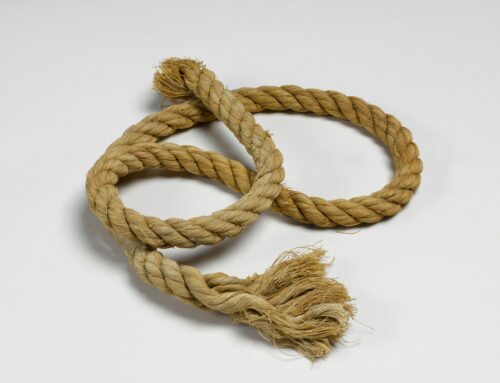
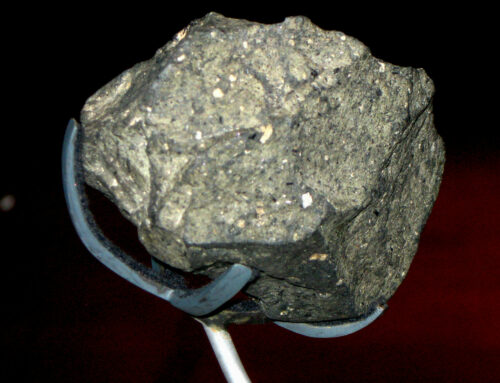
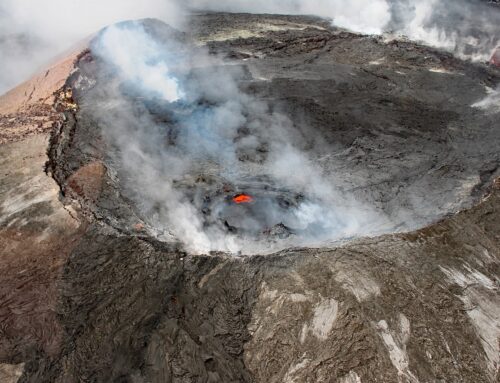
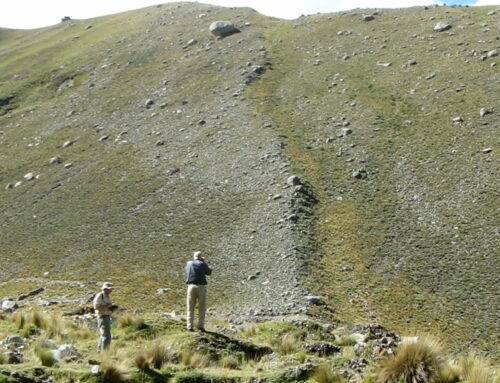
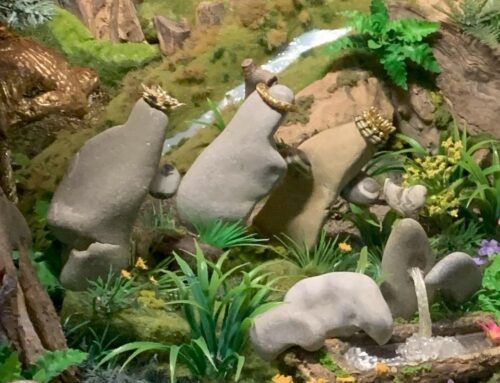

I loved learning about early mining.
Good to hear — thanks Joey!
I feel there’s alot of unknown. Im finding mineral concentrate in Kentucky. Its unsettling that our state is filled with lack of education and poverty. Due to these issues minerals are nor being identified and reported. I have gathered a nice collection of diverse minerals. Ive tried reaching out to Universities and no reply. This is sad. I’ve put pieces on websites to learn and educate. I get negative feedback and comment’s of…. Looks like bacon, last year’s fruit cake, dog etc. This world is round and it’s people’s is square. You cannot progress in this manner.
The Kentucky Geological Survey, at the University of Kentucky, has lots of good information on-line. This is the website: https://www.uky.edu/KGS/ . It is difficult for geologists to identify minerals from photos — perhaps the Geological Survey has a collection that you could visit, or at least see photos. Good luck tracking down more information – and thanks for the comment.